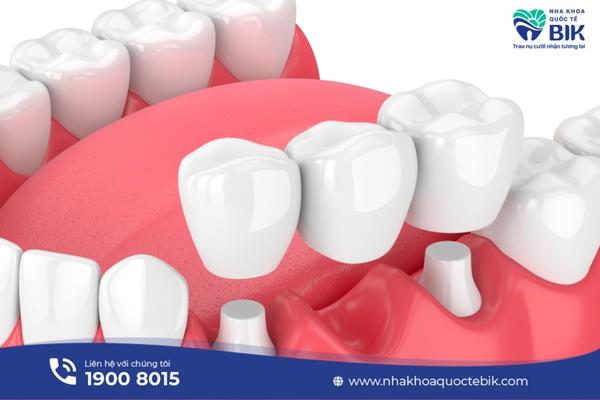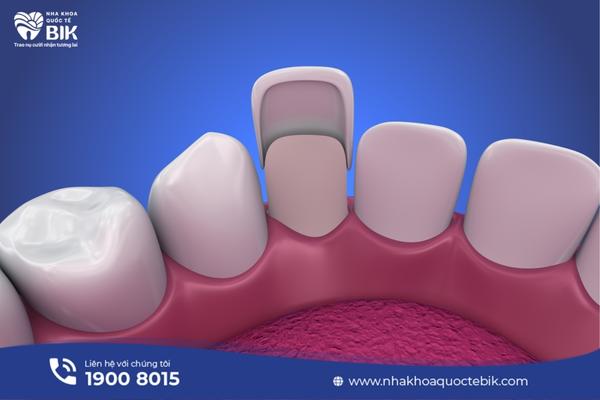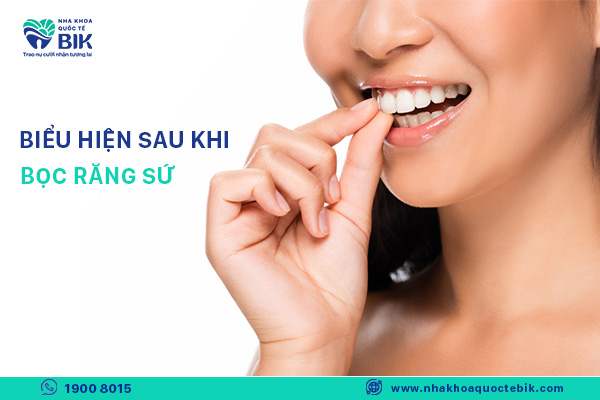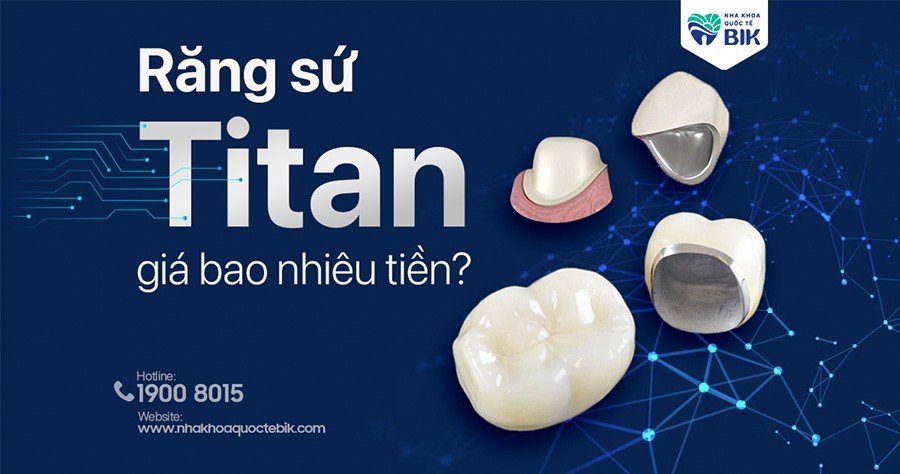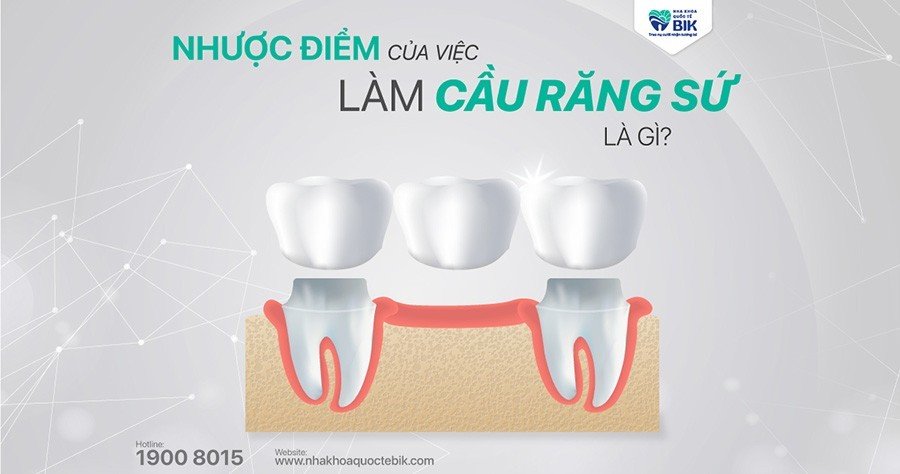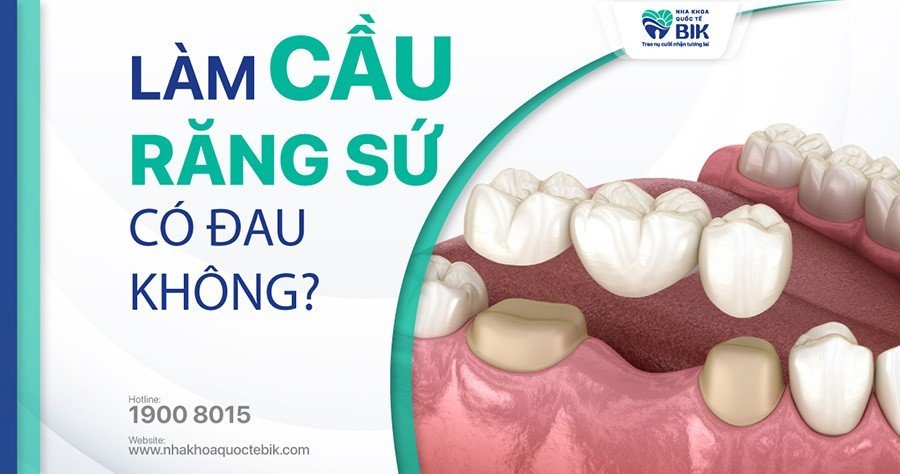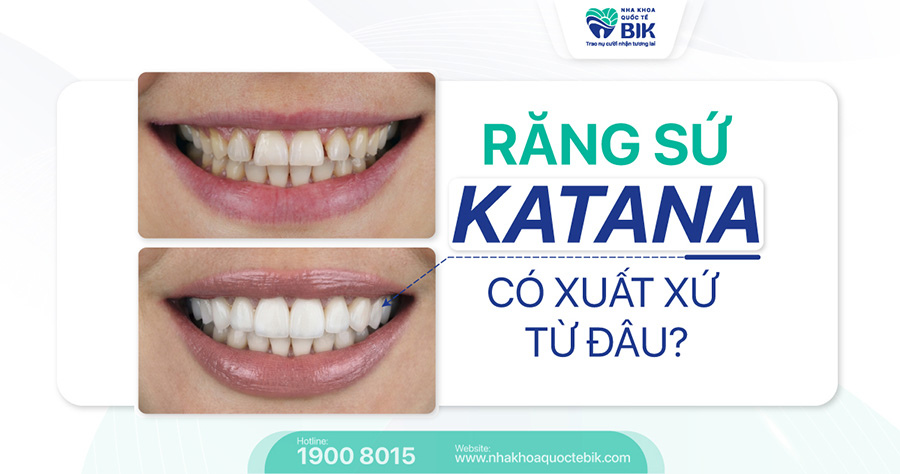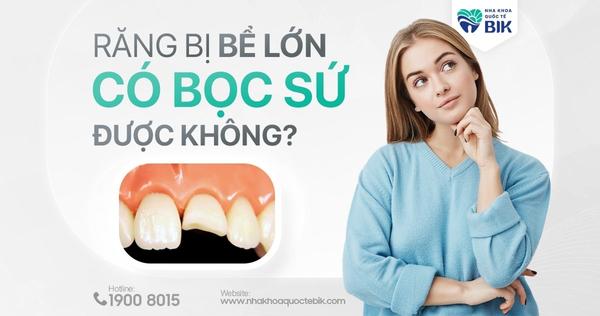
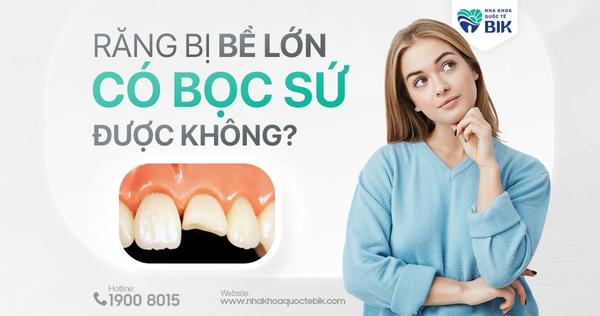 In the porcelain crown process, it is necessary to grind the real tooth stump to support the porcelain crown, so the damage to the real tooth will be the deciding factor in whether or not a large broken tooth can be covered with porcelain. If the break is too large, causing too much damage to the tooth structure, making the tooth no longer strong enough, the doctor may recommend dental implants to ensure safety.
In the porcelain crown process, it is necessary to grind the real tooth stump to support the porcelain crown, so the damage to the real tooth will be the deciding factor in whether or not a large broken tooth can be covered with porcelain. If the break is too large, causing too much damage to the tooth structure, making the tooth no longer strong enough, the doctor may recommend dental implants to ensure safety.
1. Causes of large tooth fractures

There are many subjective and objective reasons for tooth fractures, including:
1.1. Due to lack of Calcium
In many cases, when chewing food, you hear a cracking sound in your mouth, which is because a piece of tooth has fallen out. The main cause of this condition is an inadequate diet, which results in a lack of Calcium needed to help teeth stay strong. Therefore, teeth become more brittle, easily affected by chewing force or unusual hot or cold temperatures. If not quickly remedied, more and more pieces of teeth will fall out, causing the tooth to break larger.
1.2. Due to trauma
Trauma is one of the common causes of large broken teeth or even tooth loss. In many accidents, victims suffer serious dental injuries that cause their teeth to break, fracture, or crack, etc., and require cosmetic restoration.
1.3. Due to other diseases
Dental diseases such as tooth decay, gingivitis, periodontitis, enamel hypoplasia, etc. can also be the cause of large tooth fractures. In particular, tooth decay or periodontitis often occurs due to poor oral hygiene or excessive sugar consumption. Enamel hypoplasia is closely related to a daily diet lacking in fluoride and calcium to support the formation of tooth enamel.
2. Can a large broken tooth be covered with porcelain?

Whether a large broken tooth can be covered with porcelain depends on the damage to the tooth:
2.1. Teeth damaged less than 1/3 of the tooth
If chewing hard food causes a small piece of tooth to chip, it will not affect chewing function or oral health. However, to restore confidence and limit the remaining teeth from being affected, the best method is to have porcelain crowns.
2.2. Teeth damaged from 1/3 to 1/2 of the tooth
This condition often occurs due to strong impact on the tooth or lack of calcium, making the tooth weak and easily affected by normal chewing force. At this time, to protect the root tooth and the pulp deep inside, customers should choose to have porcelain crowns. If the pulp is damaged, the doctor will perform root canal treatment before applying porcelain crowns.
2.3. Teeth damaged from 1/2 of the tooth or more
In cases where the tooth is severely decayed and cannot be treated or is broken, fractured, or severely damaged, causing the remaining tooth area to be insufficient for porcelain crowns, the doctor will prescribe Implantation.
3. What are the benefits of porcelain crowns for large broken teeth?

If porcelain crowns are applied to large broken teeth, they can bring the following benefits:
3.1. Bringing high aesthetics
The porcelain crown will be crafted based on each person’s tooth mark and ensure that the size is suitable and fits the gums to cover the broken tooth, helping to restore confidence to the customer’s smile. In addition, the color of the porcelain tooth will be adjusted to match the real tooth enamel to bring the most natural look.
3.2. Restoring chewing function
With today’s modern porcelain crown technology, porcelain crowns are crafted with high durability and very good resistance, even better than real teeth. Therefore, after covering a large broken tooth with porcelain, customers can comfortably eat their favorite foods without worrying about broken or chipped teeth.
3.3. Protect teeth from harmful bacteria
The dentin and pulp at the location of large cracks are very likely to be invaded by bacteria, causing a number of other oral diseases. When performing porcelain covering, the porcelain crown now acts as a layer to protect the tooth from external agents as well as prevent bacterial attacks.
4. Commonly used porcelain teeth for large broken teeth
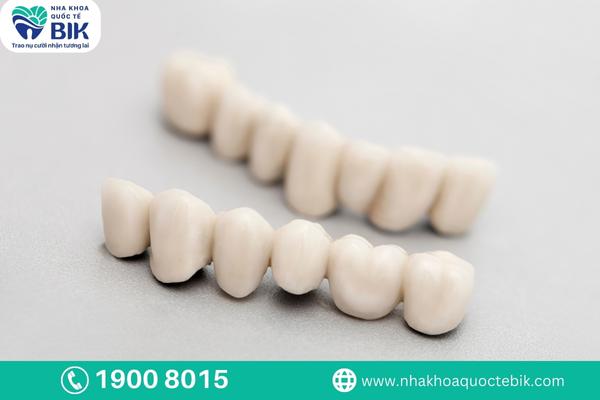
Some quality porcelain teeth with reasonable costs are chosen by many customers for large broken teeth:
4.1. Cercon all-ceramic teeth
Cercon all-ceramic teeth do not contain metal components and are composed of 2 parts made of pure ceramic. The inner frame is made of transparent Zirconia ceramic and is covered with a double layer of Cercon ceramic on the outside. Although the frame is very thin, only about 5mm, the hardness of Cercon porcelain teeth is outstandingly strong and durable over time. The disadvantage of this type of porcelain teeth is that the transparent frame is not suitable for teeth with severe discoloration because it cannot cover all the defects of real teeth.
4.2. HT Smile all-ceramic teeth
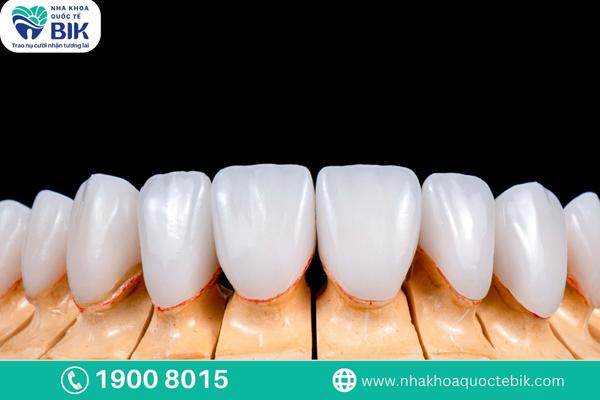
HT Smile all-ceramic teeth are also made entirely of ceramic material with a strength of up to 1400 Mpa, helping customers to comfortably chew every day. In addition, HT Smile porcelain teeth have very good heat insulation properties, so they can help the tooth stump avoid irritation when suddenly consuming food that is too hot or too cold.
4.3. Venus all-ceramic teeth
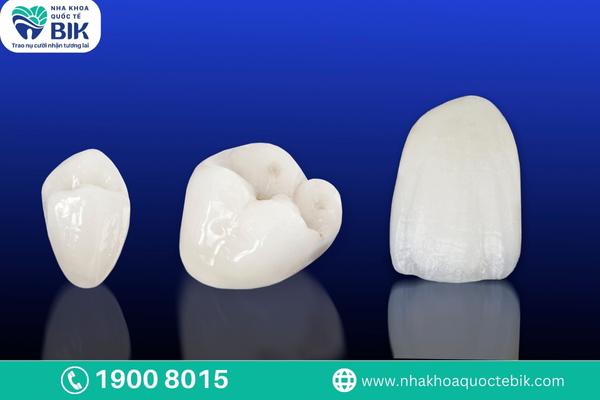
Venus all-ceramic teeth are also one of the types of porcelain teeth chosen by many customers because although thin and light, they still meet very well in terms of hardness and endurance. Venus porcelain teeth have also been tested to be completely benign and do not cause any irritation to the oral cavity. The disadvantage of this porcelain line is that the brightness is not high, so it is often suitable for use on the inside of the molars.
4.4. Katana all-ceramic teeth
Katana porcelain teeth are from Japan and are made from 100% Zirconia with high hardness and durability. This type of tooth also has very good biocompatibility, does not oxidize, does not change color over time, so the lifespan can be up to 15 years.
So whether a large broken tooth can be covered with porcelain depends on the level of damage to the tooth. Therefore, customers should go to a reputable dental facility to get advice from a specialist on cosmetic restoration methods according to each person’s specific oral condition.

